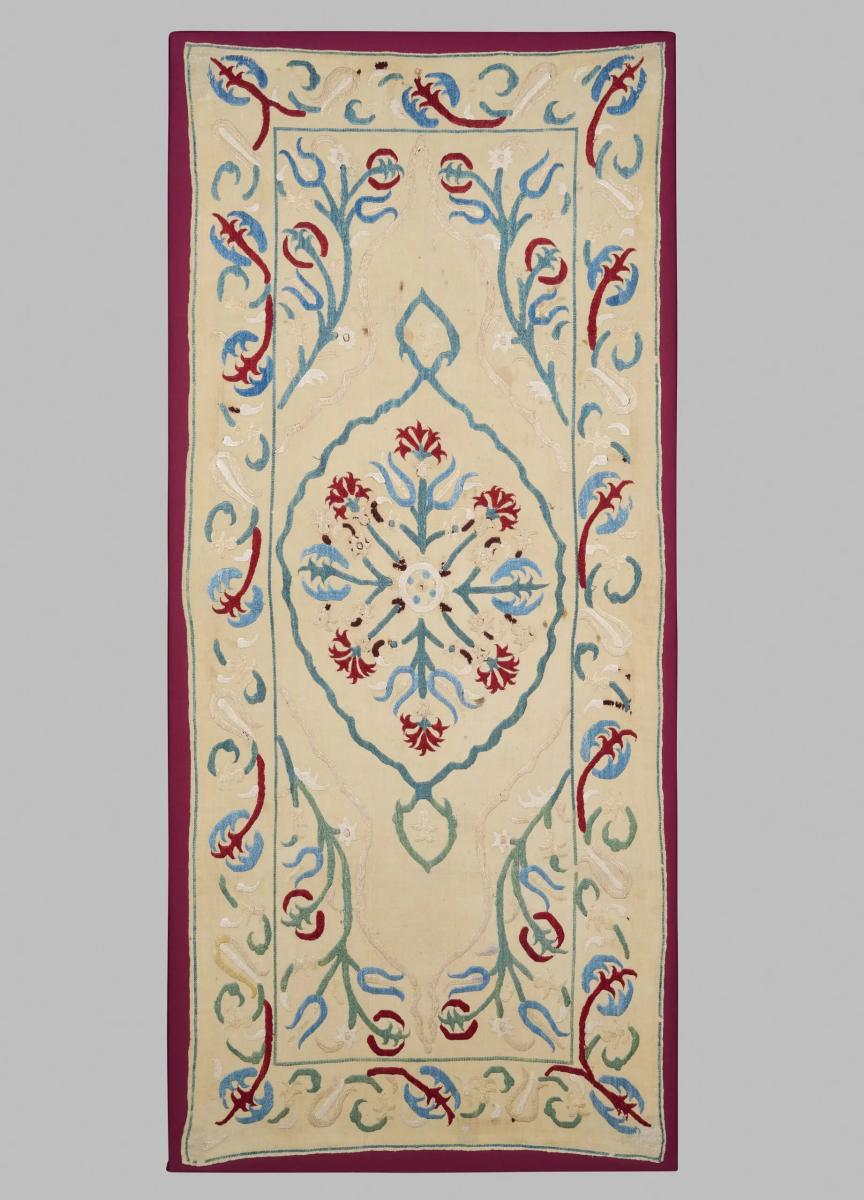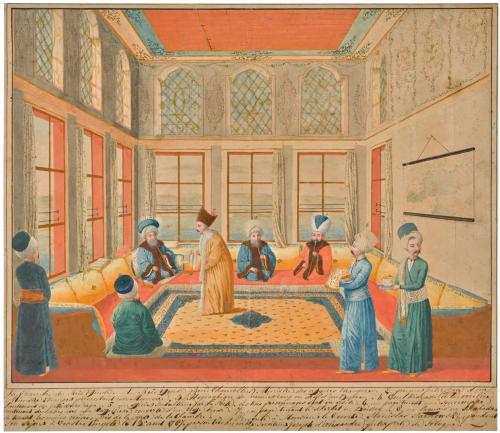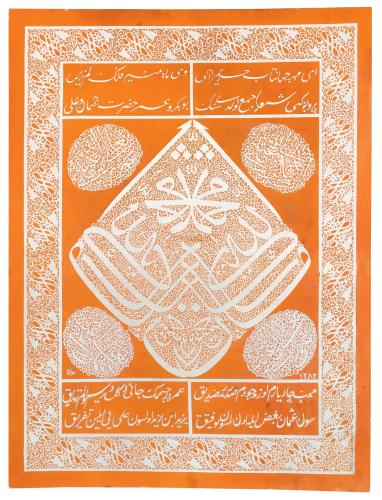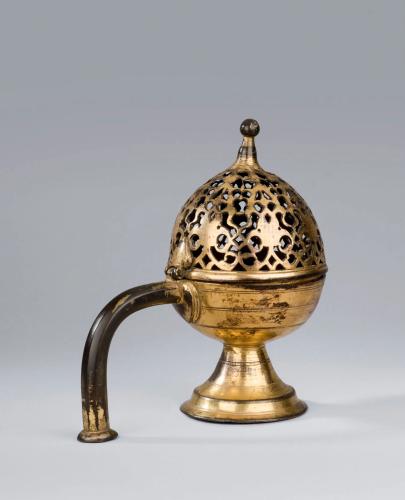

Price on application
This object is eligible for a Certificate of BADA Provenance
The BADA Standard
- Since 1918, BADA has been the leading association for the antiques and fine art trade
- Members are elected for their knowledge, integrity and quality of stock
- Our clients are protected by BADA’s code of conduct
- Our dealers’ membership is reviewed and renewed annually
- Bada.org is a non-profit site: clients deal directly with members and they pay no hidden fees
An Early Ottoman Cushion Cover Decorated with Carnations Tulips in and Around a Şemse Medallion.
Ottoman Empire.
Ottoman Palace Workshop.
17th Century.
Dimensions: 116 x 49.5 cm.
Cream compound silk-cotton cloth, embroidered in coloured silks, with a blue şemse medallion with carnations in the centre, surrounded by a band of intertwined tulips.
Carnations and tulips were among the most favoured motifs in the Ottoman decorative repertoire. The tulip has a symbolic meaning. The letters of the word tulip (Lâle) [لاله] in Turkish and Persian are the same letters used for writing the word Allah [الله] (God). These two words have the same numerological value in the abjad system (a decimal alphabetic numeral system in which the twenty-eight letters of the Arabic alphabet are assigned numerical values). Tulip is one of the leading decorative elements in Ottoman art; frequently used together with roses, hyacinths, saz leaves. It is also used with khatai blossoms as can be seen in the present tile. Tulip also played a role in imagery in Ottoman poetry. In many poems, tulip leaves are likened to the cheeks of the beloved. The word lāleh-khad (lâle-had in Ottoman Turkish), often used in Ottoman poetry, means ‘tulip-cheeked’. Tulips were among the most favoured motifs used in the Ottoman court workshops in the 16th century. The name ‘tulip’ is thought to have derived from the Turkish word tülbend (from the Persian word دلبند [dulband]) -meaning ‘large cotton band which is used in the making of turban or headgear’- because of the fancied resemblance of the flower to a turban.
During the 16th and 17th centuries interest in tulip breeding grew in Istanbul and şükûfenâmes (books on flowers) and treatises were written about tulips. For further information please see, Motif from the Sadberk Hanım Museum Collection (written by Turgut Saner, Şebnem Eryavuz and Hülya Bilgi), Sadberk Hanım Museum, Istanbul, 2020, pp. 90-93.
Like the tulip and rose, the carnation is one of the flowers frequently mentioned in Ottoman court poetry where it is likened to the face or cheek of the beloved. From the second half of the 16th century carnations are one of the most widely used motifs in designs by palace artists for fabrics, embroideries, tiles and ceramic ware. In the late 16th century stylised, fan-shaped carnation motifs were much favoured by the Ottoman elite and used to decorate imperial velvets like the present example. For further information please see, Motif from the Sadberk Hanım Museum Collection (written by Turgut Saner, Şebnem Eryavuz and Hülya Bilgi), Sadberk Hanım Museum, Istanbul, 2020, pp. 98-99.
The stylized medallion motif, seen in the centre of the present piece, is called şemse in Turkish, a word deriving from the Arabic shams, meaning ‘sun’. They are used as frame for diverse designs and arranged in various ways that plays a fundamental role in compositional layouts. Foremost among the arts in which şemse medallions have been used is bookbinding. In time these medallions became oval in shape and sometimes pendants were added at both ends (salbeklişemse). Especially in the arts of the book, they frequently feature darts drawn around the edges that are assumed to represent sunrays. For further information please see, Motif from the Sadberk Hanım Museum Collection (written by Turgut Saner, Şebnem Eryavuz and Hülya Bilgi), Sadberk Hanım Museum, Istanbul, 2020, p. 180.
A closely related turban-cover, produced in the Ottoman palace workshop, dated to late 16th, early 17th century, decorated with similar carnations and tulips, is in the Topkapı Palace Museum (Inv. No. 31/67). Please see, J. M. Rogers et al. Topkapı – Costumes, Embroideries and other Textiles, Thames & Hudson, London, 1986, pl. 98 (entry on p. 209).
Provenance
Ex-Private UK Collection.
The BADA Standard
- Since 1918, BADA has been the leading association for the antiques and fine art trade
- Members are elected for their knowledge, integrity and quality of stock
- Our clients are protected by BADA’s code of conduct
- Our dealers’ membership is reviewed and renewed annually
- Bada.org is a non-profit site: clients deal directly with members and they pay no hidden fees




